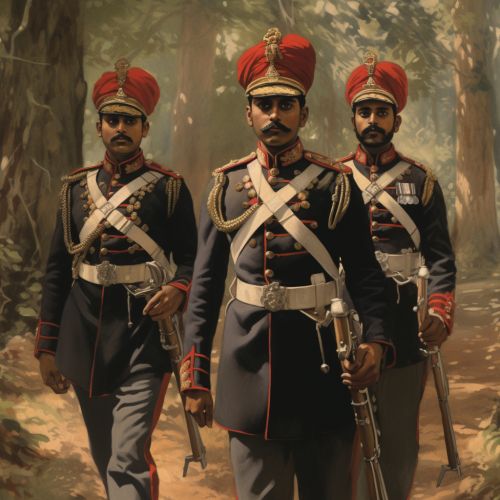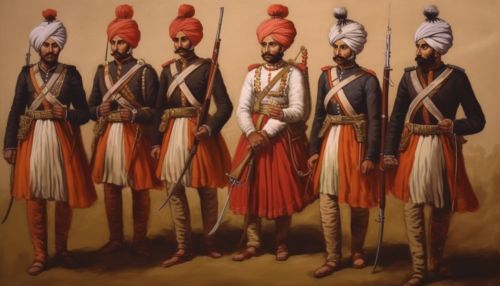Indian independence movement
Background
The Indian independence movement was a series of activities whose ultimate aim was to end the British rule in India. The movement spanned from 1857 to 1947. The first war of independence, also known as the Indian Rebellion of 1857, marked the beginning of the widespread struggle against the British rule. The movement incorporated various national and regional campaigns, agitations, movements and efforts, all of which had the common aim of ousting the British government from India.
Causes of the Movement
The Indian independence movement was a result of a number of factors that the Indian society faced under the British rule. The British East India Company came to India in the early 17th century as traders, but gradually took over the political control of the nation. The company's rule saw several aggressive and exploitative policies, which led to widespread dissatisfaction among the masses. The Doctrine of Lapse, the annexation of Indian states, the discrimination against Indian soldiers in the army, and the economic exploitation were some of the major causes that led to the uprising against the British rule.


Major Events
The Indian independence movement saw several events that had a significant impact on the country's struggle for freedom. Some of the major events include:
Indian Rebellion of 1857
The Indian Rebellion of 1857 was the first major revolt against the British rule. The rebellion was initiated by the Indian soldiers, known as sepoys, in the British army and soon it spread to various parts of the country. The rebellion, although unsuccessful, served as a major milestone in the Indian independence movement as it marked the beginning of the widespread struggle against the British rule.
Formation of Indian National Congress
The Indian National Congress (INC) was formed in 1885. The INC played a major role in the Indian independence movement. It was the first organized expression of Indian nationalism on an all-India scale. The INC provided a platform for the Indians to demand political rights and self-government.
Partition of Bengal
The Partition of Bengal in 1905 was another significant event in the Indian independence movement. The partition was carried out by Lord Curzon, the then Viceroy of India, on the pretext of administrative efficiency. However, the real motive behind the partition was to divide the nationalist movement. The partition led to widespread protests and marked the beginning of the Swadeshi movement.
Jallianwala Bagh Massacre
The Jallianwala Bagh Massacre in 1919 was one of the most brutal incidents of the British rule in India. The massacre took place in Amritsar, where thousands of Indians had gathered to protest against the repressive Rowlatt Act. The British troops, under the command of General Dyer, opened fire on the unarmed crowd, killing hundreds of people.
Civil Disobedience Movement
The Civil Disobedience Movement was launched by Mahatma Gandhi in 1930. The movement was a non-violent protest against the British salt tax. The movement started with the Dandi March, where Gandhi along with his followers marched to the Arabian Sea to make their own salt.
Quit India Movement
The Quit India Movement was launched by the Indian National Congress in 1942 during World War II. The movement demanded an end to the British rule in India. The Quit India Movement was a decisive phase of the Indian independence movement as it marked the direct action for the demand of independence.
Impact of the Movement
The Indian independence movement had a profound impact on the Indian society. The movement led to the end of the British rule in India and resulted in the establishment of an independent Indian nation on 15th August 1947. The movement also led to the development of a sense of nationalism among the Indians. The movement saw the emergence of several national leaders who played a crucial role in the country's struggle for independence.
